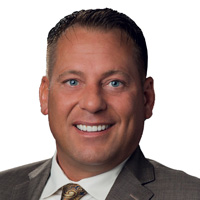Don’t Let Retirement Planning Faze You: What to Focus on in Each Phase
When you think about all the moving parts to planning for retirement, it can feel overwhelming. But breaking it down into four phases could help bring the details into focus.

It is crucial to think about the long term when you are planning for your retirement. It is never too soon to start, and having a plan – a specific road map to retirement – is absolutely essential.
Effective retirement planning comes down to four phases:
1. The accumulation phase
The accumulation phase is one of accumulating assets, usually from earned income. However, most individuals do not put away enough, or they use the wrong vehicles for accumulating assets.
From just $107.88 $24.99 for Kiplinger Personal Finance
Become a smarter, better informed investor. Subscribe from just $107.88 $24.99, plus get up to 4 Special Issues

Sign up for Kiplinger’s Free Newsletters
Profit and prosper with the best of expert advice on investing, taxes, retirement, personal finance and more - straight to your e-mail.
Profit and prosper with the best of expert advice - straight to your e-mail.
Today, most people rely on just their 401(k) plans to save for retirement, only to find out later that the savings are not enough, and their withdrawals are fully taxable. In addition to a 401(k), investors can utilize long-term savings vehicles like Roth IRAs or brokerage accounts, in which after-tax funds are invested for retirement. Self-employed investors have many options, such as the Solo 401(k), traditional or Roth IRA, SEP IRA and defined benefit plans. It is imperative to meet with a retirement adviser early on to get advice on both how much and where you should be putting your hard-earned savings during the accumulation phase.
2. The planning and preservation phase
Many people tend to ride the market roller coaster all the way until their last working day, and they simply cross their fingers and hope the market won’t plunge in the critical few years just before and after retirement. As you get closer to the distribution phase, you must start preserving what you have accumulated.
One thing you should do is scale back risk. Consider adhering to the adage 100 years minus your age equals the most money you should have at risk. Example: If you are 50, you should only have 50% of your portfolio at risk; at 60 you should only have 40% at risk, and so on.
Now, if you will have a pension or other guaranteed income in retirement, this rule of thumb may be too conservative for you, and you may feel that you can afford more risk. But you should still be careful. The last thing anyone wants is a major loss in the seven to 10 years prior to retirement. During those years, you should watch for good times when the market is up to sell off riskier investments and move those assets to vehicles that are protected from loss.
Scaling back risk as you get closer to retirement is only one part of a solid retirement plan. Your plan should also include a year-by-year spendable income strategy to meet and exceed your goals in the distribution phase while considering taxes, inflation, liquidity, market losses, required minimum distributions, the cost of health care, and funds to cover any unanticipated large purchases.
Finally, your plan should include some protection against long-term care costs, which can quickly decimate a retirement portfolio, and premature death, which can sometimes leave a surviving spouse with significantly lower guaranteed income.
3. The distribution phase
This is retirement — the phase you have been saving for your whole life — and you deserve to enjoy it. Continue to scale back risk as you get older, and be sure to stick to the plan.
Again, the cushion of liquid assets that you are not relying on to supplement your income will help cover the cost of any unanticipated large purchases, but you should not simply pull those assets from anywhere at any time. You do not want to sell off assets that are market sensitive during a down trend or a bear market, so it is good to have some of these funds in a vehicle that is not market sensitive and is very liquid.
4. The legacy phase
People want to leave money behind if they can, but that should not be your top priority. Instead, your top priority should be making it through retirement without going broke.
You may think that your IRA funds that you put away pretax might be a great gift to your heirs, but they can also be a curse. IRA money left to anyone other than the surviving spouse increases the recipient’s taxable income in the year it is received. If you want to leave money behind, there are other types of accounts, such as Roth IRAs, that are better for leaving to your family. Distributions from Roth IRAs are tax-free if the person who set up the account met the five-year holding period for contributions and conversions.
Annuities are another option that people utilize because they bypass probate upon death in most states, and the growth is tax-deferred until you or your beneficiaries make withdrawals. Stocks can be a good option because your beneficiaries inherit the stepped-up value, which means that they never have to pay taxes for any growth or increase in value that you may have experienced before they inherit the stock.
Best of all for inheritance is life insurance. With life insurance, your beneficiaries are not required to pay taxes on the difference between the premiums paid and the death benefit, which is often significant.
Each retirement planning phase calls for a different set of rules. Make sure you have a plan that is designed to change with the phases and will put you in the best possible position for your retirement.
Dan Dunkin contributed to this article.
The appearances in Kiplinger were obtained through a PR program. The columnist received assistance from a public relations firm in preparing this piece for submission to Kiplinger.com. Kiplinger was not compensated in any way.
Profit and prosper with the best of Kiplinger's advice on investing, taxes, retirement, personal finance and much more. Delivered daily. Enter your email in the box and click Sign Me Up.

Max Verkuilen is the president of Independent Retirement Group and managing partner of InPower Investments and Wealth Strategies. He is certified in long-term care planning and has won several awards for financial and insurance planning, including Elite Producer by Security Benefit and Excellence in Insurance and Financial Planning by Advisors Excel.
-
 The Wealth Equation: Balancing Money and Stress
The Wealth Equation: Balancing Money and StressSponsored Don’t let assets be a liability that strains your family.
-
 Is Your Emergency Fund Running Low? Here's How to Bulk It Up
Is Your Emergency Fund Running Low? Here's How to Bulk It UpIf you're struggling right now, you're not alone. Here's how you can identify financial issues, implement a budget and prioritize rebuilding your emergency fund.
-
 Guide to How All-Assets Planning Offers a Better Retirement
Guide to How All-Assets Planning Offers a Better RetirementAn "all-asset" strategy would integrate housing wealth and annuities with traditional investments to generate more income and liquid savings for retirees.
-
 Is Your Emergency Fund Running Low? Here's How to Bulk It Back Up
Is Your Emergency Fund Running Low? Here's How to Bulk It Back UpIf you're struggling right now, you're not alone. Here's how you can identify financial issues, implement a budget and prioritize rebuilding your emergency fund.
-
 An Expert Guide to How All-Assets Planning Offers a Better Retirement
An Expert Guide to How All-Assets Planning Offers a Better RetirementAn "all-asset" strategy would integrate housing wealth and annuities with traditional investments to generate more income and liquid savings for retirees.
-
 7 Tax Blunders to Avoid in Your First Year of Retirement, From a Seasoned Financial Planner
7 Tax Blunders to Avoid in Your First Year of Retirement, From a Seasoned Financial PlannerA business-as-usual approach to taxes in the first year of retirement can lead to silly trip-ups that erode your nest egg. Here are seven common goofs to avoid.
-
 How to Plan for Social Security in 2026's Changing Landscape, From a Financial Professional
How to Plan for Social Security in 2026's Changing Landscape, From a Financial ProfessionalNot understanding how the upcoming changes in 2026 might affect you could put your financial security in retirement at risk. This is what you need to know.
-
 6 Overlooked Areas That Can Make or Break Your Retirement, From a Retirement Adviser
6 Overlooked Areas That Can Make or Break Your Retirement, From a Retirement AdviserIf you're heading into retirement with scattered and uncertain plans, distilling them into these six areas can ensure you thrive in later life.
-
 I'm a Wealth Adviser: These Are the 7 Risks Your Retirement Plan Should Address
I'm a Wealth Adviser: These Are the 7 Risks Your Retirement Plan Should AddressYour retirement needs to be able to withstand several major threats, including inflation, longevity, long-term care costs, market swings and more.
-
 High-Net-Worth Retirees: Don't Overlook These Benefits of Social Security
High-Net-Worth Retirees: Don't Overlook These Benefits of Social SecurityWealthy retirees often overlook Social Security. But timed properly, it can drive tax efficiency, keep Medicare costs in check and strengthen your legacy.
-
 Do You Have an Insurance Coverage Gap for Your Valuables? You May Be Surprised to Learn You Do
Do You Have an Insurance Coverage Gap for Your Valuables? You May Be Surprised to Learn You DoStandard homeowners insurance usually has strict limits on high-value items, so you should formally "schedule" these valuable possessions with your insurer.
